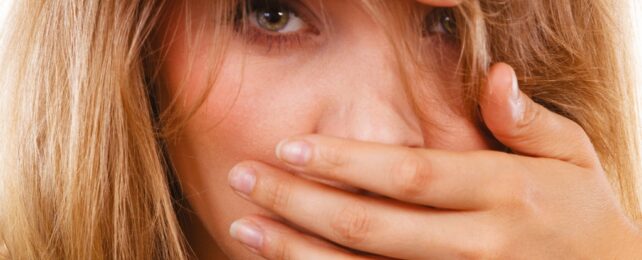Uncontrollable yet predictable, obvious yet inexplicable, blushing can be agony when we're made to feel mortified, ashamed, or simply self-conscious.
A new study suggests that a key trigger of blushing is more about that heightened sense of self-awareness, of feeling seen or exposed, rather than some cognitive computation of what other people think of us.
Helpful to know, thanks to a bunch of 40 teenagers and 20-year-olds made to watch footage of themselves singing karaoke whilst lying in an MRI machine. Although having more evidence of the link between blushing and self-awareness doesn't necessarily mean we can stop it from happening.
In 1872, Charles Darwin aptly described blushing as "the most peculiar and most human of all expressions". It only intensifies when someone points out that you're turning a shade of crimson, while being accused of the act can make you do so too, regardless of whether you're guilty or not.
Explanations of the physiological response are straightforward enough; a rush of blood to the face that reddens the cheeks, and sometimes also the ears, neck, upper chest and forehead.
But as to why someone blushes, that's been puzzling people for years. Is it shame or embarrassment over a clumsy mistake or what could be a well-deserved compliment, or a feeling of being exposed for all to see?
Do people blush because they're suddenly concerned about what others think of them and feel judged? Or is it an involuntary, emotional response that arises before we've had a moment to think it through?
A 2004 study found that blushing could be more intense on one side of the face compared to the other – if someone was staring at the person side-on while they sang. But many of these past studies, like the most recent one, are so small no strong conclusions can be drawn.
"Whereas the pallor of fear is explicable in terms of redirection of blood flow from the skin to the skeletal muscles, it is less obvious why embarrassment over certain kinds of social predicaments should be accompanied by increased blood flow to the facial region," psychologist Ray Crozier wrote in 2010, for the British Psychological Society.
In this new study, Milica Nikolic, a psychology researcher at the University of Amsterdam, and her colleagues tried to untangle some of these questions about blushing with brain scans of their karaoke singers, shown footage of themselves or other people singing.
Surprisingly, only a handful of studies have mapped patterns of brain activity in people made to feel embarrassed or self-conscious, and while they have noted physiological signs of increased arousal, none measured indicators of blushing, specifically.
Nikolic and colleagues found that the cheeks of female volunteers became hotter as they watched themselves versus others sing, which isn't all that surprising.
The functional MRI (fMRI) brain scans were more revealing. They showed that blushing activated brain areas involved in emotional arousal and attention, whereas regions involved in mentalizing – that is, imagining or thinking about your own or someone else's behavior, thoughts or intentions – were "conspicuously absent".
"These findings contribute to ongoing theoretical discussions regarding the nature of blushing and provide support for the idea that higher-order socio-cognitive processes may not be necessary for blushing to occur," Nikolic and colleagues conclude.
However, the team says their results should be "interpreted with due care" because patterns of brain activity associated with mental processes "as complex and pervasive as arousal, attention and mentalizing are not entirely distinct."
Whether or not these results can be replicated in a larger, more diverse group of people – not just female university students – also remains to be seen. The so-called replication crisis has plagued psychology research for decades, partly a reflection of the types of people these studies tend to recruit as volunteers.
The study has been published in Proceedings of the Royal Society B: Biological Sciences.
